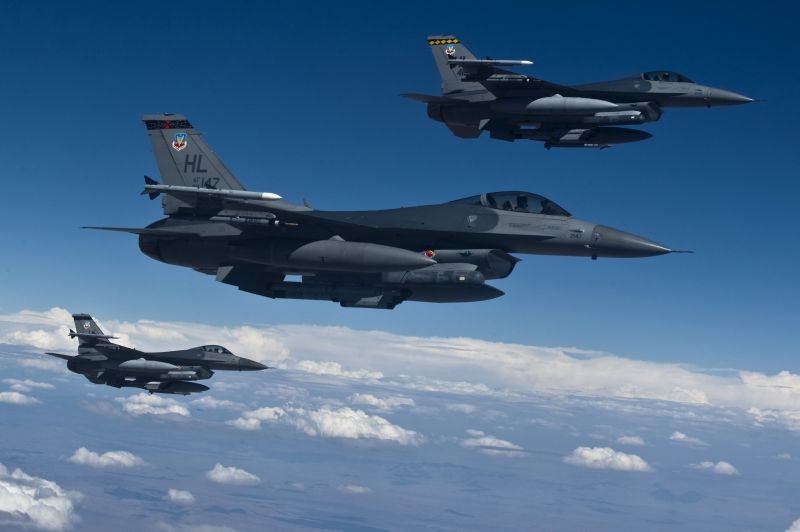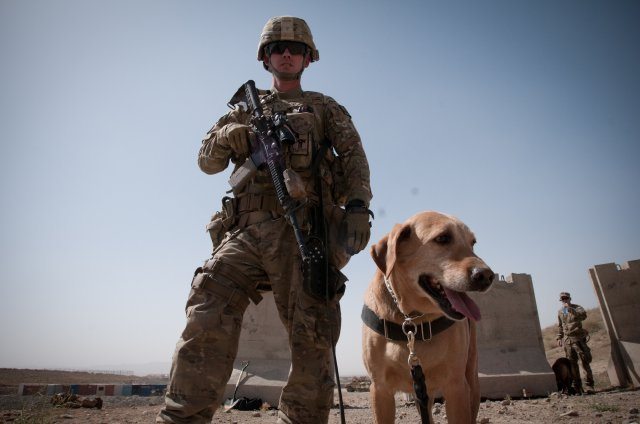As the nation winds down from a decade of combat operations in Afghanistan and Iraq, the Department of Defense is shifting its focus to the future and recently introduced new strategic guidance describing the projected security environment and key military missions for which the department will prepare.
“Our strategy review concluded that the United States must have the capability to fight several conflicts at the same time,” said Defense Secretary Leon E. Panetta while unveiling of the nation’s new defense strategic guidance Jan. 5. “We are not confronting, obviously, the threats of the past; we are confronting the threats of the 21st century. And that demands greater flexibility to shift and deploy forces to be able to fight and defeat any enemy anywhere.”
To meet 21st century challenges such as terrorism, cyber threats, anti-access/area denial environments and violent extremists, the Department of Defense relies heavily on airpower and joint interoperability to deter, deny and defeat aggression.
For more than 70 years, American airpower has stood as a cornerstone of success throughout of a wide-variety of military operations, and remained in the fight long after fighting ceased on the ground to enforce no-fly zones, move people and equipment, and provide intelligence, surveillance and reconnaissance. As technologies, tactics, techniques, procedures continuously evolve, realistic training ensures the combat air force maintains the edge in air, space and cyberspace.
“Over the past 10 years, we’ve been focused on counterinsurgency operations against an enemy with a reduced air capability,” said Maj. Gen. Mike Holmes, Air Force assistant deputy chief of staff for operations, plans and requirements. “With fewer units committed to combat operations, we’re able to begin refocusing on future threats and environments we might have to operate in.”
Exercises provide an opportunity for joint and coalition forces to train together and prepare for future contingencies. One of the most dynamic and realistic large force employment training exercises in the world is Red Flag-Nellis. With an enemy aggressor force, training range comprised of the most-realistic peacetime threats in the world, and 12,000 square miles of air space, Nellis hosts three to four two- to three-week Red Flag exercises annually.
“Red Flag provides weapons system operators from around the globe the opportunity to integrate and achieve warfighter dominance,” said Col. Tod Fingal, commander of the 414th Combat Training Squadron “Red Flag.” “Participants operate in the most realistic contested and degraded operations environment that can be replicated anywhere in the world, and are evaluated on their ability to execute a variety of scenarios.”
Nearly 1,700 Airmen, Sailors, Marines and coalition forces from Colombia and the United Arab Emirates participated in most recent iteration of Red Flag at Nellis AFB July 16-27. Flying two missions daily, friendly forces managed a 60-aircraft mission package and opposed air, space, cyber and air defense threats to execute air interdiction strikes, combat search and rescue operations, SCUD hunts, location of high value targets, and defensive counter-air missions.
“The missions are conducted at a walk, run, sprint pace and each day is a reset,” Fingal said. “We ratchet up the level of intensity throughout the exercise and have a thinking adversary with a chairman who uses the latest intelligence to combine aggressor capabilities and produce a realistic and heavily integrated enemy threat. [Friendly] forces do suffer losses on combat missions, but the main goal of the exercise is to make the scenarios so challenging that any losses happen now in the training and learning environment versus a real-world scenario.”
As the enemy threat and technology has evolved, so has Nellis AFB. In 2005, Air Combat Command established the 57th Adversary Tactics Group at Nellis in order to create an integrated enemy force for training audiences at Nellis and other exercises around the globe, and in 2011, space and cyber operations were formally incorporated into the exercise. Facilities at Nellis have also been upgraded in recent years to include a fully-operational combined air and space operations center and the Nevada Test and Training Range is working to upgrade its systems to better-prepare warfighters for emerging threats and support advanced aircraft such as the F-35.
“With air, space, cyber, command and control and intelligence, surveillance and reconnaissance assets participating together in today’s Red Flag exercises, we have a fully integrated team who can cross-talk the issues being encountered in realistic battlespace and work together to solve problems and achieve tactical results,” Fingal said.
Although exercises such as Red Flag have continued throughout the events of the past decade, the Air Force sees their existence as opportunity to prepare to for the future.
“Exercises such as Red Flag give U.S. and coalition forces an opportunity to work together toward a common set of tactics and understanding of how we’re going to fight together,” Holmes said. “They allow us to think through how we would fight as a team in situations such as anti-access/area denial environments where opposing forces are trying to keep us from reaching an area or are working to deny our ability to operate in the air or on the ground in a particular space.
“The United States must maintain a credible capability to carry out the missions we’re asked to do against improving and growing threats and systems,” Holmes concluded. “The cheapest use of military systems is to deter a war from ever happening by being ready and having the ability counter an adversary’s systems and strategy. Training exercises ensure we are ready and able to focus on a broad range of missions and meet our nation’s strategic objectives.”











